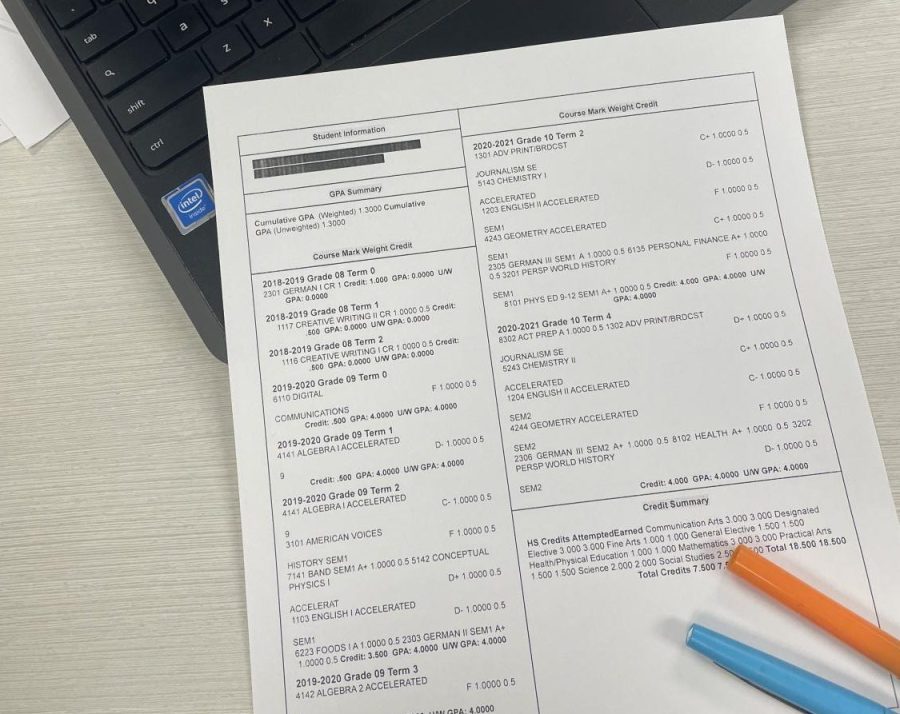Grading seems to be a constant of the universe, alongside death and taxes. The borders of nations may shift, people may die, civilizations may rise and fall, but there will always be grading, and grading shall continue unchanged until long after the last star winks out. However, that’s not quite true. A relatively new system, standards-based grading, has been adopted by teachers and school districts across the country. Adoption began in 2001, in part due to the education reform plans of the Clinton and Bush administrations. Right now, standards-based grading is an important topic because Brentwood is in the process of slowly implementing it.
According to Teacherease, a product meant to aid teachers using standards-based grading sold by private software company Common Goal Systems Inc, “Standards-based grading (SBG) is an innovation in education that focuses on learning and helps increase achievement. It is often combined with updated instructional practices and culture to better engage students and foster a positive environment.” Teacherease states that standards-based grading works in part by having teachers measure student learning in addition to teaching. For example, instead of one letter grade for underwater basket weaving, the report card would rank knowledge of each concept taught(terrestrial basket weaving, SCUBA safety, etc.) from 1-4; one meaning the student doesn’t understand what’s being taught, and 4 meaning the student exceeds expectations.
In order to get everyone up to three or four, teachers start with introductory material and give their students more advanced work only when they’re ready for it. They also reteach material for the students who don’t get it yet. The aim of all this is to let every student learn at their own pace, so no one falls behind or feels things are moving too slowly. Standards-based grading, according to Teacherease, gives students feedback and a better understanding of the course’s requirements. This in turn creates a positive environment, which makes it easier to learn.
According to an article on Edutopia by middle school administrator Josh Work, standards-based grading helps foster a growth mindset by letting students practice without getting a bad grade. For those who haven’t heard the term growth mindset before, it just means you think your talents can be developed with practice and time, and aren’t innate. It also lets him more closely examine his curriculum and more clearly communicate with students and parents.
All this is in contrast with more traditional practices, which according to the National Education Administration are coming under increased scrutiny. There are concerns traditional grading is too subjective, inaccurate, inequitable, and unfair to certain students, such as those in low-income households. If you’re paying attention in class but don’t have time for homework because you have a job, that can hurt your grade under a traditional model.
One teacher that noticed this was Sarah Schopfer, who teaches English at Colfax High School in Placer County, California. In the NEA article, she explained “I was having these conversations with students who work jobs outside of school to help their families make ends meet, they would be upset as they told me about their circumstances and why it was difficult for them to finish an assignment on time … As teachers, we should always work to do what is best for the kids. So the way I was grading did not feel good to me. This was not why I became a teacher.”
Right now, Brentwood High School follows the A through F grading system, but that won’t be the case for long.
In fact, the standards-based grading model is currently being used in Brentwood’s two elementary schools and has been for years. To get more information on SBG’s implementation at Brentwood Middle School and eventually the high school, I first talked to Dr. Loiterstein, BMS’s principal.
When asked about standards-based grading, he made a distinction between two different aspects of it, stating, “It’s actually sort of an important delineation to make because there are two things we’re talking about here. The first one is standards based grading, and the other one is standards based reporting.” According to Dr. Loiterstein, standards based teaching and grading “is something that’s been going on in the elementary, middle, and high school for many, many years…And really what it says is that we look at what standards we want students to learn. We teach to those standards, then we assess students on those standards. And so standards based teaching, and grading is all about teaching to specific teaching standards, and then grading students based on how well they’ve met those standards.”
Carolyn Eastabrook, principal of Mark Twain Elementary, agreed, explaining, “SBG is a system of looking at student growth and learning throughout the continuum of concepts and learning strands. Overarching standards are broken into specific skills that allow a student to be assessed for their knowledge beyond mastery, mastery of, nearing mastery, or not ready.”
As for reporting, prior to the implementation of standards-based reporting in grades K-5 the elementary schools used the traditional ABCDF grading system we all know and love. According to Dr. Loiterstein, “standards based reporting says that instead of just giving a student an A, B, C, D, or F and leaving them to figure out what that really means, we would say ‘Let’s list the standards out that we want students to know. And then on the report card, tell parents and students how they did relative to those standards.’ So instead of saying you got an A or B in math class and not really knowing quite what that means, we would actually list out the mathematical standards, whatever they were, and those are oftentimes determined by the state of Missouri. And we would say that ‘on this standard, the student did this well, and still has this to learn.’” Ms. Eastabrook confirmed this, and said that the elementary schools are using a 1-4 scale.
Implementation in the district is something that Dr. Loiterstein described as progressive, meaning every year standards based grading and reporting are implemented in a new grade level. This is all occurring at a rate of one new grade per school year. SBG is up to the fifth grade now, and will arrive in our building with next year’s sixth graders. Thus, any students receiving standards based grading and reporting will have received it since kindergarten. Teachers and parents will be more affected by the changes as higher grade levels adopt standards-based grading.
According to Dr. Loiterstein, standards based grading and reporting will give teachers and administrators more usable information. When asked about how well things were going with SBG in the elementary school Ms. Eastabrook said “Implementation is going very well. It was a roll-out process, engaging the next grade level year after year. We recently completed the standards for specialists so that 100% of our elementary classes are standards based. (There have been) no unexpected issues. Parents are very supportive, staff is supportive and the story it tells of a student as a learner is incredible.”
While there have been no real issues, there are some questions still left unanswered.
One is the role of homework in the new system. Dr. Loiterstein said he doesn’t think the level of homework assigned has any connection to what type of grading is being used. Ms. Eastabrook, on the other hand, said, “Homework is given as practice for mastery of a concept. Because a student does not do well on a homework assignment is not a factor for a poor rating. It is viewed as an opportunity to identify potential growth in an area or as a measure that the student is ready for the next skill.” In other words, under standards-based grading homework is seen as practice that doesn’t factor into your overall grade, and doing poorly on it only means you need more help.
Loiterstein also said that going forward, the district wants to include what he called non-academic indicators. These are skills like getting to class on time, bringing required materials, turning in homework on time, studying effectively for tests, and not distracting yourself or other students in the classroom.
Another unresolved issue is calculating GPAs. When asked about how the 1-4 scale will affect GPA, BHS’s college and career counselor Ms. Diaz said “From what I understand about standards-based grading, students will still be issued grade letters on their transcripts, so I’m not sure that it will affect colleges or scholarships.” She later said that while there was a committee tasked with implementing standards-based grading in Brentwood, she wasn’t on it.
Alex Tripamer, the assistant superintendent, implied that the district didn’t have a concrete answer yet, saying, “At this point, our focus has been on getting our elementary schools to fully implement standards-based grading. We are now starting to work with the middle school teachers on standards-based grading. To get the middle school fully implementing standards-based grading, the process will take us through the next three school years. At that point, our district committee will research and examine how standards-based grading fits in at the high school level, the best grading practices employed by other high schools, and ultimately, how standards-based grading works with respect to calculating a student’s GPA and how grades are reported on a student’s transcript.”
While no high school students will feel a difference yet, SBG is set to bring major changes to how classes are taught and grades are reported. Although the exact details of those changes are still unclear, if all goes according to plan, standards-based grading will be here next fall with the sixth-grade class.















